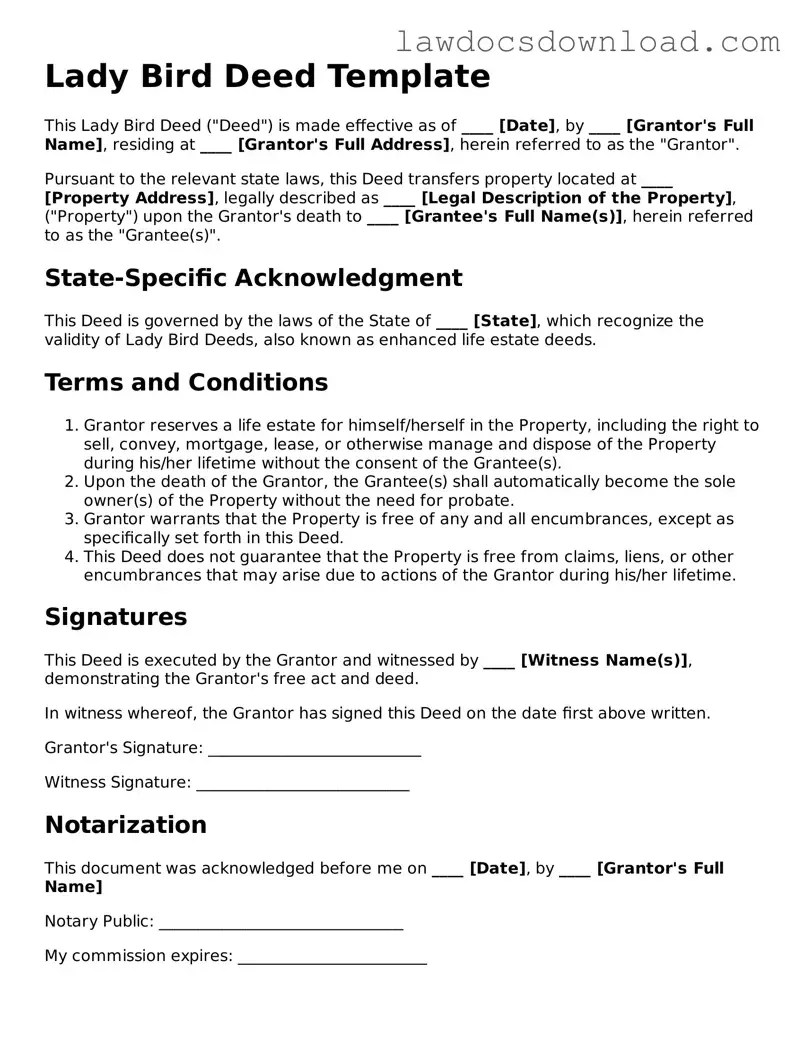Lady Bird Deed Template
This Lady Bird Deed ("Deed") is made effective as of ____ [Date], by ____ [Grantor's Full Name], residing at ____ [Grantor's Full Address], herein referred to as the "Grantor".
Pursuant to the relevant state laws, this Deed transfers property located at ____ [Property Address], legally described as ____ [Legal Description of the Property], ("Property") upon the Grantor's death to ____ [Grantee's Full Name(s)], herein referred to as the "Grantee(s)".
State-Specific Acknowledgment
This Deed is governed by the laws of the State of ____ [State], which recognize the validity of Lady Bird Deeds, also known as enhanced life estate deeds.
Terms and Conditions
- Grantor reserves a life estate for himself/herself in the Property, including the right to sell, convey, mortgage, lease, or otherwise manage and dispose of the Property during his/her lifetime without the consent of the Grantee(s).
- Upon the death of the Grantor, the Grantee(s) shall automatically become the sole owner(s) of the Property without the need for probate.
- Grantor warrants that the Property is free of any and all encumbrances, except as specifically set forth in this Deed.
- This Deed does not guarantee that the Property is free from claims, liens, or other encumbrances that may arise due to actions of the Grantor during his/her lifetime.
Signatures
This Deed is executed by the Grantor and witnessed by ____ [Witness Name(s)], demonstrating the Grantor's free act and deed.
In witness whereof, the Grantor has signed this Deed on the date first above written.
Grantor's Signature: ___________________________
Witness Signature: ___________________________
Notarization
This document was acknowledged before me on ____ [Date], by ____ [Grantor's Full Name]
Notary Public: _______________________________
My commission expires: ________________________
Preparation Statement
This document was prepared by ____ [Name of the person preparing the deed], located at ____ [Address].
